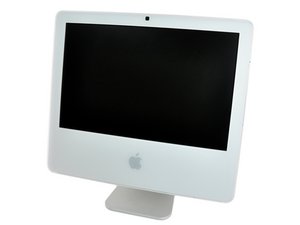Internal HD has difficulty mounting
iMac, 17", Intel 2 GHz Core 2 Duo
Internal hard drive sometimes has difficulty mounting. I can hear it start to spin up, click 2-3 times, then spin back down, repeat. This happens during a cold start (following shutdown), but not for a restart. It also happens when "un-sleeping" if I set Energy Saver prefs to put computer to sleep. If "put computer to sleep" is set to Never, no problem.
If I'm having problems, I can usually get the internal drive to mount by booting from the DVD drive using the OS X install disk or Prosoft Drive Genius 2 disk. Disk Utility and Drive Genius 2 tests detect no problems. (tho after a failure to mount, there are usually some Disk Utility repairs needed)
So is the internal drive on its last legs, or could this be something else, such as a power supply problem?
Es esta una buena pregunta?

 5
5  3
3 
 2.6mil
2.6mil 